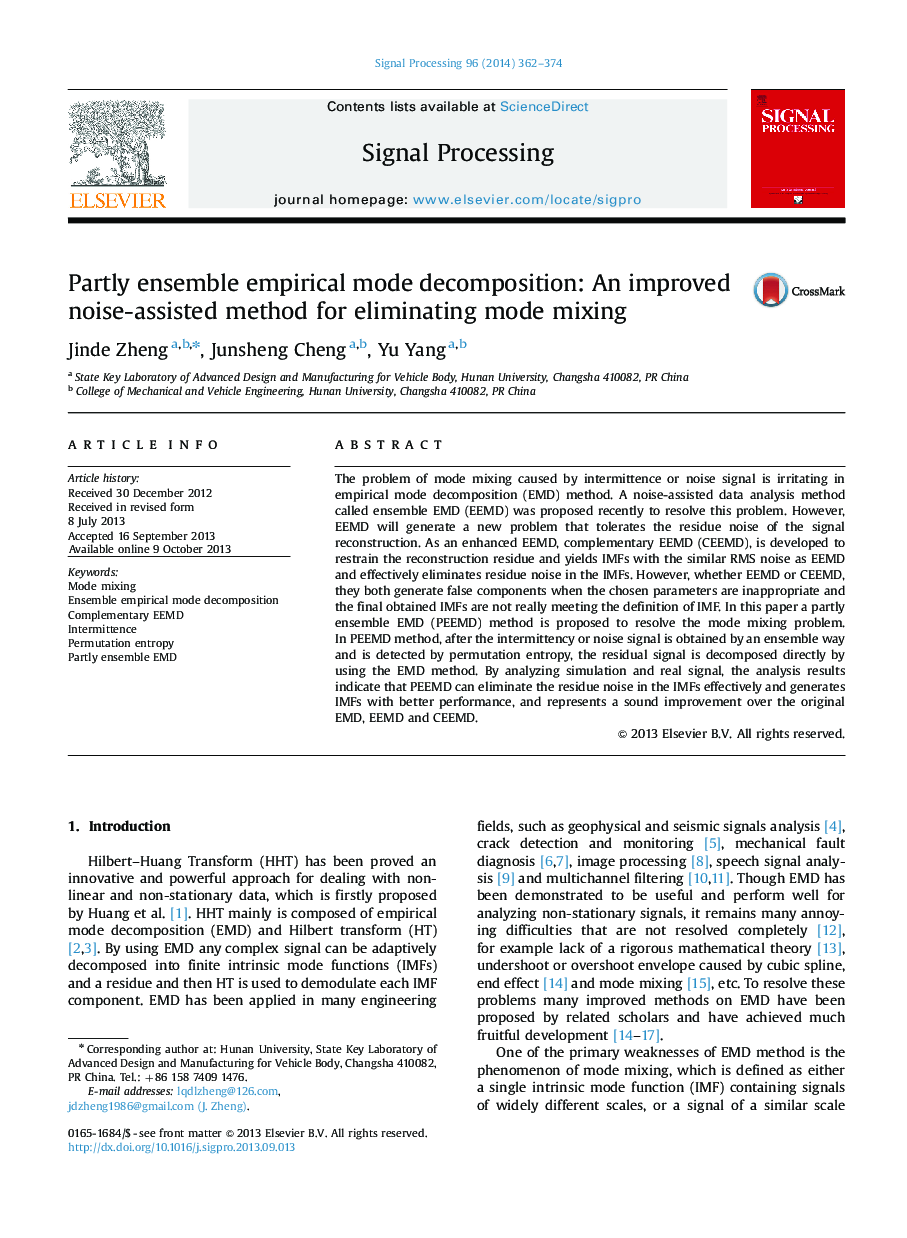| Article ID | Journal | Published Year | Pages | File Type |
|---|---|---|---|---|
| 562995 | Signal Processing | 2014 | 13 Pages |
•An improved EEMD, PEEMD was proposed to resolve the mode mixing of EMD.•PEEMD was compared with EMD, EEMD and CEEMD.•PEEMD was verified an effective method for eliminating mode mixing.•Simulation and real signals were analyzed to verify the advantages of PEEMD.
The problem of mode mixing caused by intermittence or noise signal is irritating in empirical mode decomposition (EMD) method. A noise-assisted data analysis method called ensemble EMD (EEMD) was proposed recently to resolve this problem. However, EEMD will generate a new problem that tolerates the residue noise of the signal reconstruction. As an enhanced EEMD, complementary EEMD (CEEMD), is developed to restrain the reconstruction residue and yields IMFs with the similar RMS noise as EEMD and effectively eliminates residue noise in the IMFs. However, whether EEMD or CEEMD, they both generate false components when the chosen parameters are inappropriate and the final obtained IMFs are not really meeting the definition of IMF. In this paper a partly ensemble EMD (PEEMD) method is proposed to resolve the mode mixing problem. In PEEMD method, after the intermittency or noise signal is obtained by an ensemble way and is detected by permutation entropy, the residual signal is decomposed directly by using the EMD method. By analyzing simulation and real signal, the analysis results indicate that PEEMD can eliminate the residue noise in the IMFs effectively and generates IMFs with better performance, and represents a sound improvement over the original EMD, EEMD and CEEMD.
